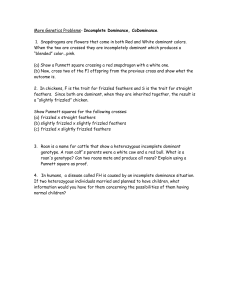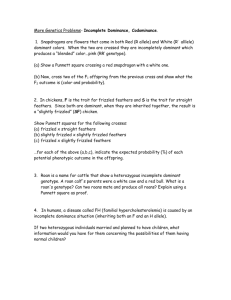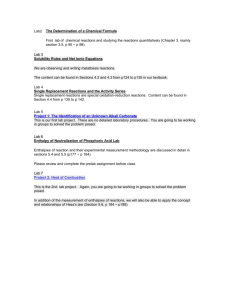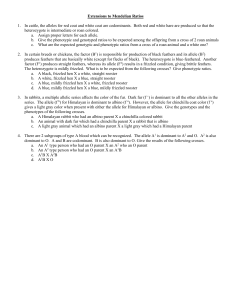This is a log of the research ideas that come... times, these ideas are brushed aside as we go about...
advertisement
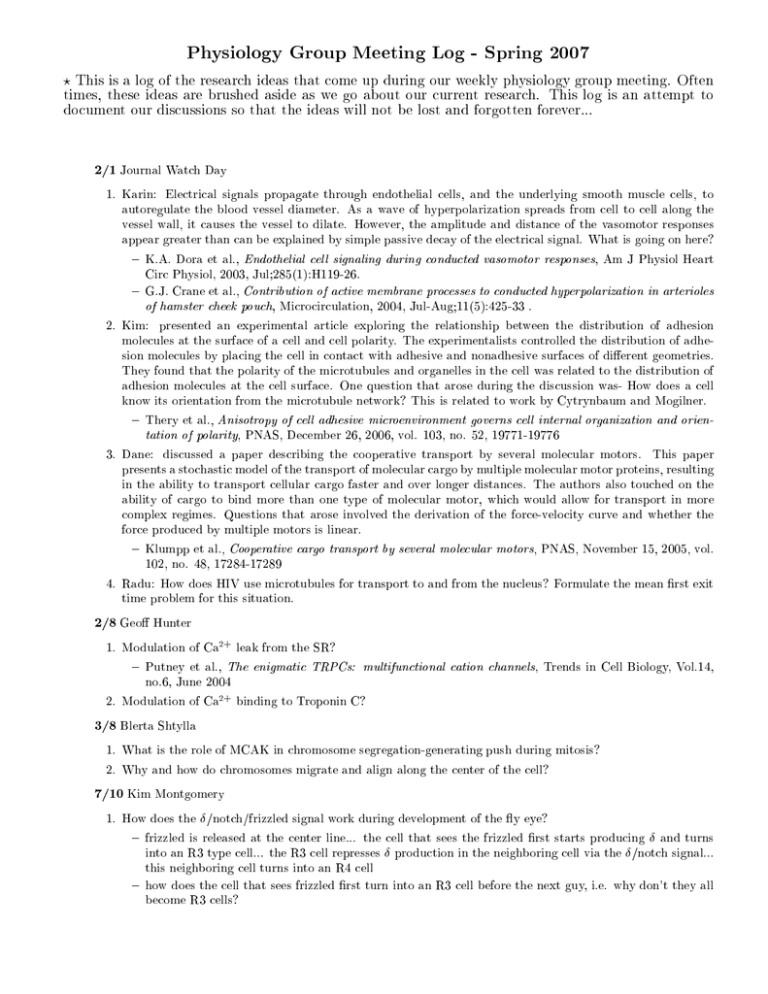
Physiology Group Meeting Log - Spring 2007
This is a log of the research ideas that come up during our weekly physiology group meeting. Often
times, these ideas are brushed aside as we go about our current research. This log is an attempt to
document our discussions so that the ideas will not be lost and forgotten forever...
?
2/1 Journal Watch Day
1. Karin: Electrical signals propagate through endothelial cells, and the underlying smooth muscle cells, to
autoregulate the blood vessel diameter. As a wave of hyperpolarization spreads from cell to cell along the
vessel wall, it causes the vessel to dilate. However, the amplitude and distance of the vasomotor responses
appear greater than can be explained by simple passive decay of the electrical signal. What is going on here?
{ K.A. Dora et al., Endothelial cell signaling during conducted vasomotor responses, Am J Physiol Heart
Circ Physiol, 2003, Jul;285(1):H119-26.
{ G.J. Crane et al., Contribution of active membrane processes to conducted hyperpolarization in arterioles
of hamster cheek pouch, Microcirculation, 2004, Jul-Aug;11(5):425-33 .
2. Kim: presented an experimental article exploring the relationship between the distribution of adhesion
molecules at the surface of a cell and cell polarity. The experimentalists controlled the distribution of adhesion molecules by placing the cell in contact with adhesive and nonadhesive surfaces of dierent geometries.
They found that the polarity of the microtubules and organelles in the cell was related to the distribution of
adhesion molecules at the cell surface. One question that arose during the discussion was- How does a cell
know its orientation from the microtubule network? This is related to work by Cytrynbaum and Mogilner.
{ Thery et al., Anisotropy of cell adhesive microenvironment governs cell internal organization and orientation of polarity, PNAS, December 26, 2006, vol. 103, no. 52, 19771-19776
3. Dane: discussed a paper describing the cooperative transport by several molecular motors. This paper
presents a stochastic model of the transport of molecular cargo by multiple molecular motor proteins, resulting
in the ability to transport cellular cargo faster and over longer distances. The authors also touched on the
ability of cargo to bind more than one type of molecular motor, which would allow for transport in more
complex regimes. Questions that arose involved the derivation of the force-velocity curve and whether the
force produced by multiple motors is linear.
{ Klumpp et al., Cooperative cargo transport by several molecular motors, PNAS, November 15, 2005, vol.
102, no. 48, 17284-17289
4. Radu: How does HIV use microtubules for transport to and from the nucleus? Formulate the mean rst exit
time problem for this situation.
2/8 Geo Hunter
1. Modulation of Ca2+ leak from the SR?
{ Putney et al., The enigmatic TRPCs: multifunctional cation channels, Trends in Cell Biology, Vol.14,
no.6, June 2004
2. Modulation of Ca2+ binding to Troponin C?
3/8 Blerta Shtylla
1. What is the role of MCAK in chromosome segregation-generating push during mitosis?
2. Why and how do chromosomes migrate and align along the center of the cell?
7/10 Kim Montgomery
1. How does the /notch/frizzled signal work during development of the y eye?
{ frizzled is released at the center line... the cell that sees the frizzled rst starts producing and turns
into an R3 type cell... the R3 cell represses production in the neighboring cell via the /notch signal...
this neighboring cell turns into an R4 cell
{ how does the cell that sees frizzled rst turn into an R3 cell before the next guy, i.e. why don't they all
become R3 cells?
{ is the response graded? or threshold?
{ do cells further away from the center line make more mistakes? do they have a harder time reading the
frizzled signal?
{ how steep does the frizzeld gradient have to be for this to work? this would give a space constant for the
retina... i.e. how big can the eye be?
